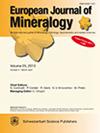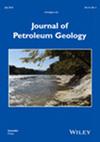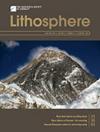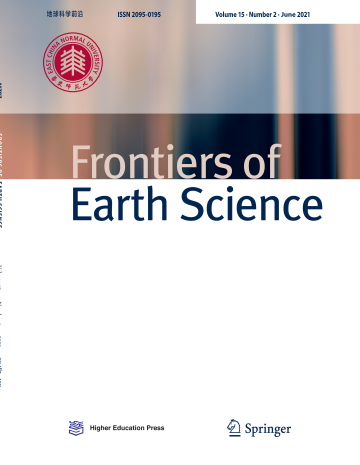Geoscientific Instrumentation Methods and Data Systems
SCI期刊
期刊缩写:
GEOSCI INSTRUM METH
 复制
复制
 反馈
反馈
影响因子:
期刊影响因子(Impact factor,IF) 即某刊平均每篇论文的被引用数,是表征期刊影响大小的一项定量指标,它实际上是某刊在某年被全部源刊物引证该刊前两年发表论文的次数,与该刊前两年所发表的全部源论文数之比。
1.8
 反馈
反馈
ISSN:
ISSN是由8个数字组成的编码,旨在识别各种报纸、专业杂志、画报、期刊,无论其性质或载体版本(纸版及电子版)。
print: 2193-0856
on-line: 2193-0864
研究领域:
GEOSCIENCES, MULTIDISCIPLINARYMETEOROLOGY-METEOROLOGY & ATMOSPHERIC SCIENCES
h-index:
h-index是指该期刊有h篇文章至少被引用h次,是一项简单易懂的评估指标,不像平均值会受极端值影响,可呈现出多数文章的被引用表现。Google使用过去5年的h-index数据评价期刊的影响力,“h5指数”比较难以被人为操控,不会因为多了一篇超高被引论文而明显增长,另一方面,刻意减少发文量也不会对提升h5指数有作用。
8
Gold OA文章占比:
Gold OA文章占比是指一个总体中金色OA文章数量占总体文章数量的比重。OA期刊的文章主要通过金色通道(Gold road,也称为Gold OA,即期刊官网)和绿色通道(Green road,或Green OA)实现开放获取。金色通道是开放获取期刊通过自己的官网来实现的,而绿色通道是通过把文章自存档于机构知识库(Institutional Repositories,比如哈佛大学学术库DASH)或学科知识库中来实现。
100.00%
SCI收录类型:
Science Citation Index Expanded (SCIE) || Scopus (CiteScore) || Directory of Open Access Journals (DOAJ)
期刊介绍英文:
Geoscientific Instrumentation, Methods and Data Systems (GI) is an open-access interdisciplinary electronic journal for swift publication of original articles and short communications in the area of geoscientific instruments. It covers three main areas: (i) atmospheric and geospace sciences, (ii) earth science, and (iii) ocean science. A unique feature of the journal is the emphasis on synergy between science and technology that facilitates advances in GI. These advances include but are not limited to the following:
concepts, design, and description of instrumentation and data systems;
retrieval techniques of scientific products from measurements;
calibration and data quality assessment;
uncertainty in measurements;
newly developed and planned research platforms and community instrumentation capabilities;
major national and international field campaigns and observational research programs;
new observational strategies to address societal needs in areas such as monitoring climate change and preventing natural disasters;
networking of instruments for enhancing high temporal and spatial resolution of observations.
GI has an innovative two-stage publication process involving the scientific discussion forum Geoscientific Instrumentation, Methods and Data Systems Discussions (GID), which has been designed to do the following:
foster scientific discussion;
maximize the effectiveness and transparency of scientific quality assurance;
enable rapid publication;
make scientific publications freely accessible.
CiteScore:
引用分数(英语:CiteScore,CS)是一种用来反映学术期刊最近发表文章“年平均被引用次数”的衡量指标。该指标由Elsevier于 2016 年 12 月推出,以替代常用的JCR影响因子(由Clarivate计算)。 CiteScore是Scopus中系列期刊指标的一部分,包括 SNIP(源文档标准化影响),SJR (SClmago杂志排名),引用文档计数以及引用百分比。
| CiteScore | SJR | SNIP | CiteScore排名 |
|---|
| 3.7 | 0.468 | 0.839 | 大类:Earth and Planetary Sciences
小类:Geology 90 / 321 72% 大类:Earth and Planetary Sciences
小类:Oceanography 54 / 145 63% 大类:Earth and Planetary Sciences
小类:Atmospheric Science 80 / 148 46% |
发文信息
中科院SCI期刊分区
中科院分区升级版是在基础版的基础上,消除了对预置学科体系的依赖,例如期刊-学科隶属关系。基于概率统计原理的期刊超越指数,使分区结果更加鲁棒,不易操纵,揭示出更多优秀的基础研究期刊。
2019-2021年,3年过渡期,会同时发布基础版和升级版,便于用户单位过渡、调整。2022年开始,将只发布升级版。
|
大类
|
小类
|
TOP期刊
|
综述期刊
|
|
4区
地球科学
|
4区
地球科学:综合
GEOSCIENCES, MULTIDISCIPLINARY
4区
气象与大气科学
METEOROLOGY & ATMOSPHERIC SCIENCES
|
否
|
否
|
WOS期刊分区
WoS-JCR分区:SCIE、SSCI收录期刊主要按影响因子高低被分为四个区(Quartile),分别是Q1区,Q2区,Q3区,Q4区,各占25%。Q1区是影响因子最靠前25%的期刊,Q4区是靠后的25%的期刊。
| 学科分类 |
|---|
Q3GEOSCIENCES, MULTIDISCIPLINARY Q3METEOROLOGY & ATMOSPHERIC SCIENCES |
历年影响因子
| 2015年 | 2016年 | 2017年 | 2018年 | 2019年 | 2020年 | 2021年 | 2022年 | 2023年 |
| 1.0710 | 1.0230 | 1.3190 | 1.3020 | 1.1820 | 1.4730 | 1.5000 | 1.8000 | 1.8000 |
历年发表
年文章数是指每年6月SCI发布的IF数据中所提供的上一年全年发文数量。如2018年7月-2019年6月,显示的是2017年的发文数.对极少数热门期刊,我们会在1月份更新为最新一年的发文数。
| 2012年 | 2013年 | 2014年 | 2015年 | 2016年 | 2017年 | 2018年 | 2019年 | 2020年 | 2021年 | 2022年 |
| 20 | 35 | 21 | 22 | 47 | 49 | 29 | 26 | 34 | 26 | 23 |
出版商:
Copernicus Gesellschaft mbH
编辑部地址:
BAHNHOFSALLEE 1E, GOTTINGEN, GERMANY, 37081
同类期刊
Geoscientific Instrumentation Methods and Data Systems - 最新文献
查看全部
Pub Date : 2024-07-08
DOI: 10.5194/gi-13-205-2024
Kevin Wolz, Christopher Holst, Frank Beyrich, Eileen Päschke, Matthias Mauder
Pub Date : 2024-06-28
DOI: 10.5194/gi-2024-3
Erik Bollen, Rik Hendrix, Bart Kuijpers
Pub Date : 2024-06-26
DOI: 10.5194/gi-13-193-2024
Qiong Zhang, Xin Chen, Zhonghang Ji, Fei Yan, Zhengkun Jin, Yunqing Liu
免责声明:
本页显示期刊或杂志信息,仅供参考学习,不是任何期刊杂志官网,不涉及出版事务,特此申明。如需出版一切事务需要用户自己向出版商联系核实。若本页展示内容有任何问题,请联系我们,邮箱:info@booksci.cn,我们会认真核实处理。







 扫码关注我们
扫码关注我们

